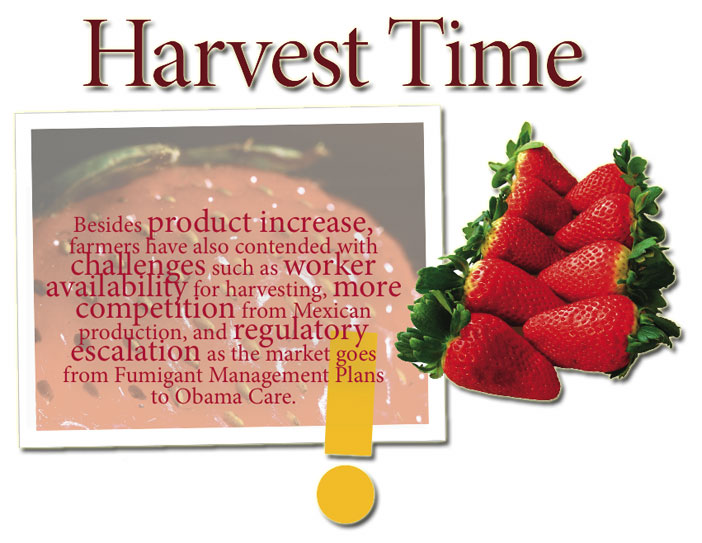It’s halfway through the harvest and the public is now starting to enjoy (this month and over the next few months) the sweet, delicious taste of Florida hand-picked strawberries. This season so far has growers seeing red (literally): Picking high-quality strawberries in large volumes, thanks to another warmer-than-usual winter in Florida, and an early decline in growth from competitor growers in California.
“This year the plants had a more sluggish start; California’s volume declined earlier and prices held up pretty well until early January,” states Ted Campbell, executive director of the Florida Strawberry Growers Association. “Volume in Florida will probably be equal or greater than last year. The season’s growth depends on when we start (this year was later) and when we end (determined by California’s startup). There are not too many problems just yet, and I think the market will be okay.”
Comparing Seasons
The four months of typical strawberry-growing last season had Florida growers facing an extended season in California as well as more market competition from Mexico, which also had a larger fruit volume. Profits for Florida farmers were not as great as was previously hoped for.
“The market was flooded last year in mid-December, which crashed the price. When prices go down they seldom recover, so most growers lost their most profitable early-season sales and therefore only a few were able to break even for the entire season,” Campbell recalls.
This season in 2013 began in similar fashion with a warmer winter that has been leading to an oversupply in strawberries and no freezes yet to slow down growth. Besides product increase, farmers have also contended with challenges such as worker availability for harvesting, more competition from Mexican production, and regulatory escalation as the market goes from Fumigant Management Plans to Obama Care.
One continuing factor that has been a struggle for local growers is fumigation, as Campbell mentions that each season brings more paperwork, more mandatory training classes for chemicals used, more buffer zones, and more loss of the chemical needed most — methyl bromide.
Yet, even with these challenges and more competition, local growers, as well as the Florida Strawberry Growers Association, are optimistic on how the rest of the season will fare.
“No two seasons are ever alike and can be hard to predict,” Campbell concludes, “but without all the unknown variables, growers are certainly optimistic about increasing production and demand for their strawberries.”
CREDIT
story by BLAIR TOWNLEY

